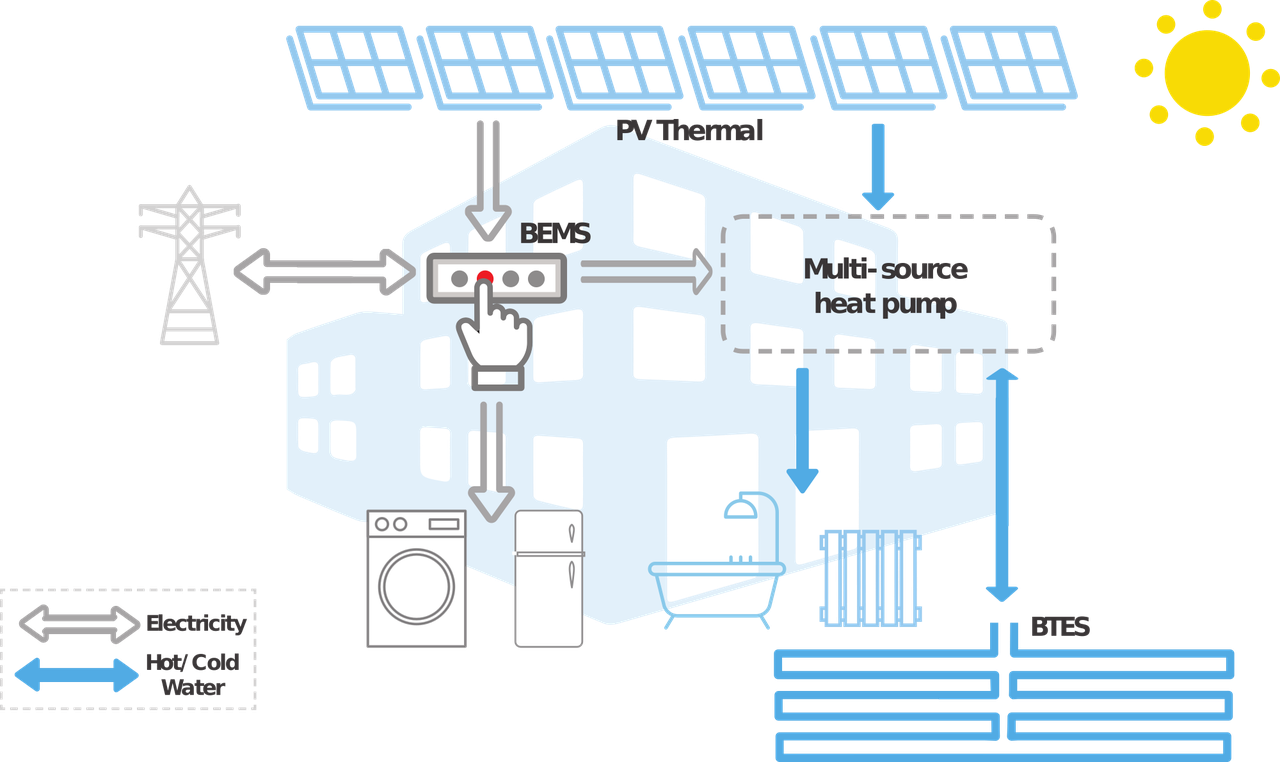The Challenge
Decarbonising energy consumption in buildings is essential to achieving the EU energy and climate goals. While the use of renewable electricity in buildings has grown steadily, the uptake of renewable energy solutions for heating and cooling has been slower. This is due to several factors, including the greater variety of technological options and the varied needs of users and buildings.
Project Objectives
RES4BUILD will decarbonise the energy consumption in buildings by developing integrated renewable energy-based solutions that are tailored to the needs and requirements of users and installers. The consortium’s multidisciplinary team of experts will:
- - Improve the performance and reduce the cost of the most innovative components of the RES4BUILD solutions.
- - Develop tools for simulation, sizing and control, making optimal use of integrated energy systems and the flexibility of consumption, while respecting the wishes of end-users.
- - Engage all relevant stakeholders in an interactive process to co-design integrated energy systems that suit current needs and future expectations.
- - Test and validate various RES4BUILD solutions in different climates.
- - Pave the way for bringing the developed solutions to the market using rigorous life cycle assessments to measure their real impact, ensuring wide adoption.
At a Glance

Instrument: Horizon 2020 Research and Innovation Action
TOTAL BUDGET: €4,999,702.50
DURATION: 48 Months
CONSORTIUM: 15 Partners from 8 countries
COORDINATOR: WIP Renewable Energies
Innovative RES4BUILD Technologies
Magnetocaloric Heat Pump (MHP) – Using the change in temperature when magnetising (heating) and demagnetising (cooling) magnetic material to build a heat pump.
Multi-source heat pump concept - Coupling the MHP to the evaporator of a vapour-compression heat pump, the latter of which employs a two-stage configuration with in-series DC-driven compressors.
PV/T collectors - Combining the features of standard PV panels and solar thermal collectors to produce both heat and electricity with a higher energy yield per m2 than separate collectors.
Borehole Thermal Energy Storage (BTES) – Extracting heat from an array of boreholes during winter using a heat exchanger. The chilled circuit water is returned to the borehole, with the flow reversed in summer months.
Building Energy Management System (BEMS) - Monitoring the mechanical and electrical equipment in buildings, including the main loads, energy generation and storage systems, and using controlling software to optimise the system’s operation to meet user-defined objectives.

Impacts
- Solutions that reduce our dependence on fossil fuels for electricity, heating and cooling in buildings.
- Innovative components and technologies for increased performance in building systems.
- Best practice to approach renovations of energy systems in a more integrated and systematic way.
- Shared knowledge and innovative synergies with industry and other sectors.
- More efficient operation and optimised interaction with the grid, and thus a lower energy bill for European consumers.
- Social inclusion and an accelerated energy transition due to the co-design approach with various stakeholders.
